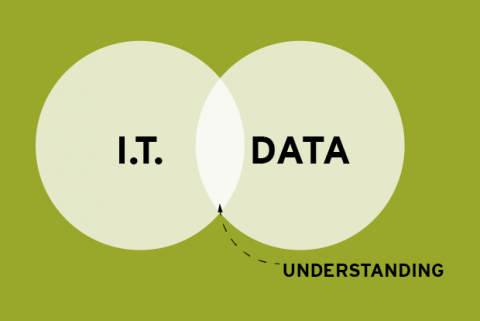When data is your business then the roles of IT and other functional organizations had better be closely aligned. That’s the reality that propelled Rob Burkart from a sales and operational background into the CIO role at InnerWorkings, a billion-dollar marketing execution services firm that, since its founding in 2002, has grown to encompass more than 1,500 employees globally.
 An industrial engineer by training, he joined the Chicago headquartered company as vice president of operations in 2009, after obtaining his MBA. “Sales and operations, at least the way we do it here, is about leveraging data to make the right decisions for our clients,” he says. “Having seen and used a lot of that data in the sales and operations processes, it made a lot of sense to move me into a position to control how that data is generated through the technology.”
An industrial engineer by training, he joined the Chicago headquartered company as vice president of operations in 2009, after obtaining his MBA. “Sales and operations, at least the way we do it here, is about leveraging data to make the right decisions for our clients,” he says. “Having seen and used a lot of that data in the sales and operations processes, it made a lot of sense to move me into a position to control how that data is generated through the technology.”
IT efficiency
IT, Burkart says, is both an enabler to the business and engaged in defining InnerWorkings processes that ensure customer orders are delivered on time, on budget, and with the highest quality.
Major brands essentially outsource their marketing activities or their marketing supply chain functions to InnerWorkings, from print management of marketing materials to the design, sourcing and delivery of branded merchandise and product packaging, and point of sale displays.
“We spend a lot of time making sure IT is both efficient for our professionals and gives the client the data they need and allows us to really help them apply the data to make better real-time decisions that result in actionable outcomes that, in most cases, we find they wouldn’t have otherwise,” he says.
Deploying for global needs
Since Burkart stepped into the CIO role, the company has expanded from a primarily U.S. business with a footprint in the U.K., to one with a presence in every major market around the world. With that rapid expansion, IT and the business has had to come to grips with ensuring cross-border consistency for client campaigns across its network of suppliers.
Among the challenges: “How do you deploy from one central location and keep it very fast around the globe? How do you design for different formats and different languages and make the user experience very seamless no matter who is using it and what their predefined notions of technology are?”
To help meet those needs, Burkart says he’s focusing on pushing out technology and IT talent closer to the clients.
Embedding IT
“Most of the top performing organizations that we see really believe their talent differentiates and drives their business, so this year it is one of my goals to get the IT team to some extent out of Chicago and embedded in the business really in every function,” he explains. “This really extends our ability to have a technologist on the ground rubbing elbows with our professionals to make more data-driven business decisions, technology decisions, and client decisions.”
By embedding IT staffers with business staffers who are executing orders, marketing campaigns for clients, he adds, the organization can spread the use of data and educate the business about how big data and machine learning can be applied. “A lot of that stuff works in a lab setting, but when you get in out in the real world, it’s much more difficult to apply,” he says.







